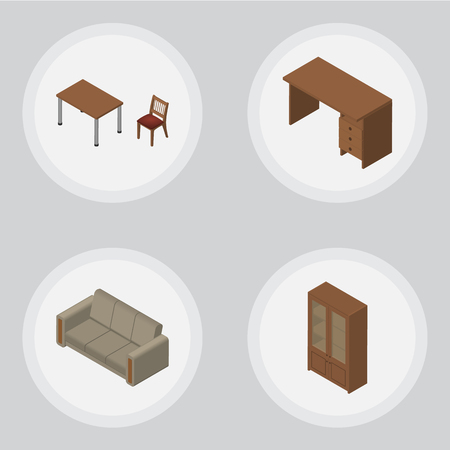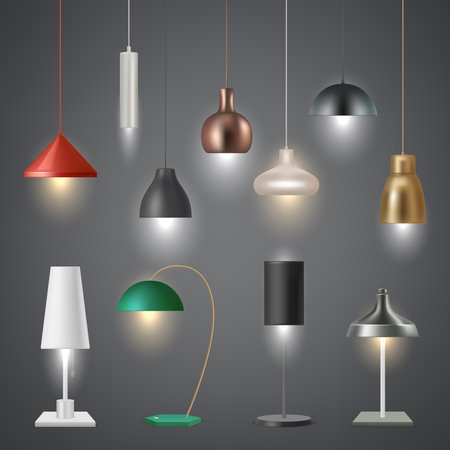1. The Psychological Impact of Wall Textures
Wall textures play a significant role in shaping the atmosphere of a space. They can evoke emotions, influence mood, and even change how we perceive the size and comfort of a room. Both tactile and visual perception contribute to the overall ambiance, making texture an essential element in interior design.
How Texture Affects Emotion
Different textures can trigger different emotional responses. For example, smooth and glossy surfaces often create a sleek, modern, and clean feel, while rough or uneven textures add warmth and depth to a space. The choice of texture can make a room feel cozy, energizing, or even calming.
| Texture Type | Emotional Effect |
|---|---|
| Smooth and Glossy | Modern, clean, sophisticated |
| Rough and Uneven | Rustic, warm, inviting |
| Soft and Velvety | Luxe, comfortable, soothing |
| Pebbled or Stone-like | Natural, grounded, earthy |
| Pattered or Embossed | Dramatic, artistic, bold |
The Role of Tactile Perception
Tactile perception refers to how a surface feels when touched. Even if we don’t physically interact with walls often, knowing their texture can still affect how we perceive a space. Soft or fabric-covered walls may provide a sense of comfort and relaxation, while rough brick or stone can give a room an industrial or historical feel.
The Role of Visual Perception
The way a texture looks can be just as impactful as how it feels. Our brains associate visual cues with certain experiences—shiny surfaces might remind us of luxury, while matte finishes can create a sense of calm. Lighting also plays a role; textured walls cast shadows that add depth and dimension to a space.
2. How Texture Affects Space Perception
The texture of a wall plays a crucial role in how we perceive the size and atmosphere of a room. Whether a surface is smooth or rough can influence whether a space feels open and airy, warm and cozy, or structured and defined. Understanding these effects can help you make informed design choices to create the desired ambiance.
Smooth vs. Rough Textures
Smooth and rough textures impact space perception in different ways. Here’s a comparison:
| Texture Type | Effect on Space Perception |
|---|---|
| Smooth Textures | Create a sleek, modern look that reflects light, making rooms appear larger and more open. |
| Rough Textures | Add depth and dimension, absorbing light to create a cozier and more intimate atmosphere. |
The Impact of Texture on Room Size Perception
The way light interacts with different textures changes how large or small a room feels. Smooth walls reflect more light, enhancing brightness and giving the illusion of extra space. This effect works well in smaller rooms where maximizing openness is key.
On the other hand, rough textures absorb light, reducing glare and creating a sense of warmth. This makes larger spaces feel more inviting by adding character and reducing an overly expansive feeling.
Using Texture to Define Spaces
Beyond influencing size perception, texture helps define areas within a home. For example:
- A smooth finish in an open-concept living area can enhance the sense of spaciousness.
- A textured accent wall can create a focal point, adding interest without overwhelming the room.
- Coarse textures in dining areas or bedrooms contribute to a cozy, intimate setting.
Selecting the Right Texture for Your Space
The key to using texture effectively is balancing aesthetics with functionality. If your goal is to make a small room appear larger, opt for smooth finishes with lighter colors. If you want to add warmth and character to a large space, consider rougher textures like exposed brick or stucco.

3. Popular Wall Texture Styles and Their Effects
Wall textures play a significant role in shaping the mood and perception of space in interior design. In American homes, several common wall textures contribute to different aesthetics and spatial experiences. Below, we explore some of the most popular styles and their effects on interior spaces.
Smooth Finish
A smooth wall texture is one of the most versatile and widely used finishes in modern American homes. It provides a clean, polished look that enhances minimalistic and contemporary designs.
Effects on Mood and Space
- Creates a sleek, modern aesthetic
- Makes a room feel more open and spacious
- Allows light to reflect evenly for a brighter atmosphere
Stucco Texture
Stucco is a textured finish that adds depth and character to walls. It has been popular in Southwestern and Mediterranean-style homes, offering a rustic yet elegant touch.
Effects on Mood and Space
- Adds warmth and coziness to a space
- Creates a handcrafted, artistic feel
- Can make large rooms feel more intimate due to its textured surface
Shiplap Walls
Shiplap consists of horizontal wooden boards that create a structured, layered appearance. It is commonly found in farmhouse-style homes but has also been adapted into modern interior designs.
Effects on Mood and Space
- Adds a sense of structure and organization to the space
- Creates a cozy, inviting ambiance
- The horizontal lines can make a room appear wider
Comparison of Common Wall Textures
| Wall Texture Style | Aesthetic Appeal | Impact on Space Perception | Best Used In |
|---|---|---|---|
| Smooth Finish | Modern, Minimalist, Elegant | Makes spaces feel larger and brighter | Contemporary Homes, Apartments, Office Spaces |
| Stucco Texture | Rustic, Artistic, Warm | Adds depth; makes large rooms feel cozier | Mediterranean Homes, Southwestern Designs, Accent Walls |
| Shiplap Walls | Farmhouse, Cozy, Structured | The horizontal pattern can visually widen a room | Cottages, Farmhouse-Style Homes, Feature Walls |
The right wall texture can dramatically influence how a space feels. Whether you prefer the simplicity of smooth walls, the rich character of stucco, or the warmth of shiplap, choosing the right texture helps enhance your home’s overall aesthetic and atmosphere.
4. Choosing the Right Texture for Different Rooms
Selecting the right wall texture can significantly impact both the functionality and emotional atmosphere of a space. Whether designing a cozy bedroom, an inviting living room, or a professional commercial setting, understanding how textures affect mood and perception is essential.
Textures for Residential Spaces
Bedrooms: Creating a Relaxing Retreat
In bedrooms, soft and subtle textures work best to promote relaxation and comfort. Smooth or lightly textured walls, such as knockdown or eggshell finishes, can create a calming environment. Avoid overly rough textures that may feel too stimulating.
Living Rooms: Enhancing Warmth and Style
For living rooms, consider textures that add depth and warmth. A light stucco finish or brushed plaster can create an inviting ambiance. If you prefer a modern look, smooth finishes with accent textured walls can add character without overwhelming the space.
Kitchens and Bathrooms: Practical and Stylish Choices
In kitchens and bathrooms, wall textures should balance aesthetics with functionality. Semi-gloss finishes are popular due to their durability and ease of cleaning. Lightly textured walls, such as sand swirl or satin finishes, can add visual interest while resisting moisture.
Textures for Commercial Spaces
Offices: Professional Yet Comfortable
Office spaces benefit from smooth or minimally textured walls that provide a clean and professional appearance. Subtle patterns like knockdown or light stucco can add sophistication without being distracting.
Retail Stores: Creating a Memorable Experience
Retail environments often use bold textures to reinforce branding and create an engaging shopping experience. Exposed brick, wood paneling, or Venetian plaster can enhance the stores identity while making the space more dynamic.
Restaurants: Setting the Mood with Texture
The texture choice in restaurants depends on the desired dining experience. Rustic eateries may use rough stucco or wood paneling to create a cozy feel, while upscale establishments might opt for sleek plastered walls to evoke elegance.
Quick Reference Guide: Best Textures by Room Type
| Room Type | Recommended Texture | Mood/Effect |
|---|---|---|
| Bedroom | Smooth, Knockdown, Eggshell | Calm, Cozy, Relaxing |
| Living Room | Light Stucco, Brushed Plaster | Warm, Inviting, Stylish |
| Kitchen/Bathroom | Semi-Gloss, Sand Swirl | Practical, Clean, Modern |
| Office | Smooth, Light Stucco | Professional, Focused, Sophisticated |
| Retail Store | Exposed Brick, Venetian Plaster | Engaging, Brand-Oriented, Dynamic |
| Restaurant (Rustic) | Rough Stucco, Wood Paneling | Cozy, Warm, Welcoming |
| Restaurant (Upscale) | Sleek Plastered Walls | Elegant, Refined, Luxurious |
The right wall texture can transform any space by enhancing its function and emotional impact. By carefully choosing textures based on the purpose of each room, you can create spaces that are both visually appealing and practical.
5. Balancing Texture with Other Design Elements
When designing an interior space, wall textures play a crucial role in shaping the overall ambiance. However, for a well-balanced and visually appealing design, its essential to consider how textures interact with other elements like lighting, color, and furniture.
How Lighting Affects Wall Texture
Lighting can dramatically change how a wall texture appears. Natural light enhances subtle textures, while artificial lighting can create shadows that emphasize rough surfaces. Choosing the right lighting helps control the visual impact of textured walls.
| Lighting Type | Effect on Wall Texture |
|---|---|
| Natural Light | Makes subtle textures more visible and enhances depth. |
| Soft Ambient Lighting | Smooths out rough textures and creates a cozy atmosphere. |
| Directional Lighting | Casts shadows that highlight texture details. |
The Role of Color in Texture Perception
The choice of wall color can either enhance or downplay a texture. Lighter colors make textures appear softer and less pronounced, while darker hues emphasize depth and contrast. Selecting the right combination ensures harmony in the space.
Combining Color and Texture for Desired Effects
- Light Colors + Smooth Texture: Creates an airy, spacious feel.
- Dark Colors + Rough Texture: Adds drama and depth to the room.
- Tonal Variations: Using different shades of the same color enhances subtle texture differences.
Selecting Furniture to Complement Textured Walls
The type of furniture you choose should complement rather than compete with your wall textures. A balance between materials, finishes, and scale is key to achieving a cohesive look.
Tips for Matching Furniture with Wall Textures
- Smooth Walls: Pair with textured upholstery or natural materials like wood to add warmth.
- Textured Walls: Opt for sleek, minimalist furniture to avoid overwhelming the space.
- Mixed Materials: Combine various finishes (e.g., metal, glass, fabric) for a dynamic yet balanced aesthetic.
Achieving Harmony in Interior Design
A well-designed space considers all elements—wall texture, lighting, color, and furniture—to create a seamless experience. By balancing these factors thoughtfully, you can craft interiors that feel inviting and visually engaging without being overpowering.

